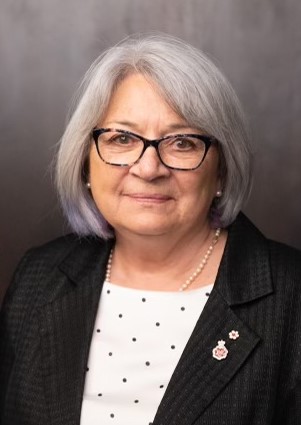
Eskimo is an exonym that refers to two closely related Indigenous peoples: Inuit and the Yupik of eastern Siberia and Alaska. A related third group, the Aleut, who inhabit the Aleutian Islands, are generally excluded from the definition of Eskimo. The three groups share a relatively recent common ancestor, and speak related languages belonging to the family of Eskaleut languages.

The Inupiat are a group of Alaska Natives whose traditional territory roughly spans northeast from Norton Sound on the Bering Sea to the northernmost part of the Canada–United States border. Their current communities include 34 villages across Iñupiat Nunaat, including seven Alaskan villages in the North Slope Borough, affiliated with the Arctic Slope Regional Corporation; eleven villages in Northwest Arctic Borough; and sixteen villages affiliated with the Bering Straits Regional Corporation. They often claim to be the first people of the Kauwerak.
The Thule or proto-Inuit were the ancestors of all modern Inuit. They developed in coastal Alaska by the year 1000 and expanded eastward across northern Canada, reaching Greenland by the 13th century. In the process, they replaced people of the earlier Dorset culture that had previously inhabited the region. The appellation "Thule" originates from the location of Thule in northwest Greenland, facing Canada, where the archaeological remains of the people were first found at Comer's Midden.
The Paleo-Eskimo meaning "old Eskimos", also known as, pre-Thule or pre-Inuit, were the peoples who inhabited the Arctic region from Chukotka in present-day Russia across North America to Greenland before the arrival of the modern Inuit (Eskimo) and related cultures. The first known Paleo-Eskimo cultures developed by 3900 to 3600 BCE, but were gradually displaced in most of the region, with the last one, the Dorset culture, disappearing around 1500 CE.

The Birnirk culture was a prehistoric Inuit culture of the north coast of Alaska, dating from the 6th century AD, to the 12th century AD The Birnirk culture first appeared on the American side of the Bering Strait, descending from the Old Bering Sea/Okvik culture and preceding the Thule culture; it is distinguished by its advanced harpoon and marine technology. A burial mound of the Birnirk culture was discovered in the town of Wales, Alaska; 16 more have been found in Utqiagvik at the "Birnirk site," which is now a National Historic Landmark. An ancient Birnirk village has been found at present-day Ukpiaġvik.

The toggling harpoon is an ancient weapon and tool used in whaling to impale a whale when thrown. Unlike earlier harpoon versions which had only one point, a toggling harpoon has a two-part point. One half of the point is firmly attached to the thrusting base, while the other half of the point is fitted over this first point like a cap and attached to the rest of the point with sinew or another string-like material. When the harpoon is thrust into an animal, the top half of the point detaches and twists horizontally into the animal under the skin, allowing hunters to haul the animal to ship or shore. This harpoon technology lodges the toggling head of the harpoon underneath both the animal's skin and blubber, and instead lodges the point in the muscle, which also prevents the harpoon slipping out.
The Maritime Archaic is a North American cultural complex of the Late Archaic along the coast of Newfoundland, the Canadian Maritimes and northern New England. The Maritime Archaic began in approximately 7000 BC and lasted until approximately 3500 BC, corresponding with the arrival of the Paleo-Eskimo groups who may have outcompeted the Maritime Archaic for resources. The culture consisted of sea-mammal hunters in the subarctic who used wooden boats. Maritime Archaic sites have been found as far south as Maine and as far north as Labrador. Their settlements included longhouses, and boat-topped temporary or seasonal houses. They engaged in long-distance trade, as shown by white Ramah chert from northern Labrador being found as far south as Maine.
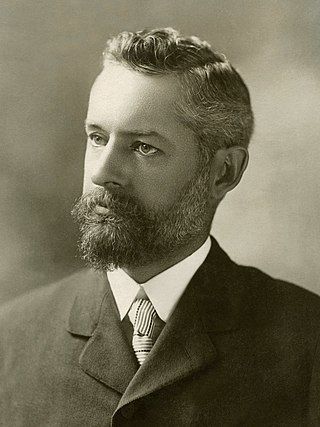
Edward William Nelson was an American naturalist and ethnologist. A collector of specimens and field naturalist of repute, he became a member of several expeditions to survey the fauna and flora. He was part of a team with Clinton Hart Merriam that took part in the Death Valley Expedition. He also explored the Yosemite Valley. A number of vertebrate species are named after him.
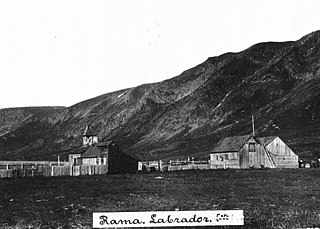
Ramah was a small mission run by the Moravian Church in northern Labrador from 1871 until 1908. It was located on Ramah Bay.
James W. VanStone was an American cultural anthropologist specializing in the group of peoples then known as Eskimos. He studied at the University of Pennsylvania and was a student of Frank Speck and Alfred Irving Hallowell. One of his first positions was at the Field Museum of Natural History in Chicago. In 1951, following completion of graduate studies, he joined the faculty of the Department of Anthropology at the University of Alaska in Fairbanks. In 1955 and 1956, he conducted fieldwork with the Inuit at Point Hope, Alaska. Beginning in the summer of 1960, he started field work among Chipewyan Indians, living along the east shore of Great Slave Lake in Canada's Northwest Territories among eastern Athapaskans for a period of eleven months over three years. He died of heart failure.
The Center for Northern Studies(CNS) in Wolcott in the U.S. state of Vermont was founded in 1971 by Steven B. Young as an interdisciplinary study center focused on the natural and human systems of the Circumpolar North, including the cultures and environments of Arctic Canada, Alaska, Scandinavia and Siberia. CNS offered semester and year-long opportunities for undergraduates interested in exploring northern issues, with northern field experiences incorporated into all semester programs. Courses ranged from field biology to cultural anthropology of Circumpolar cultures to northern archaeology. The center also offered field study courses in Bear Swamp, an extensive tract of boreal forest wetland adjacent to the CNS facilities, which included classrooms, a laboratory, and a specialized Polar research library, which was open to the public. The Center operated as an independent non-profit until 2003 when CNS merged with Sterling College in Craftsbury Common, Vermont. The Center for Northern Studies at Sterling College operated from 2003 until 2010, when Sterling College phased out the focus on Northern Studies. The CNS facilities were sold in 2012, with Sterling College retaining ownership of Bear Swamp.
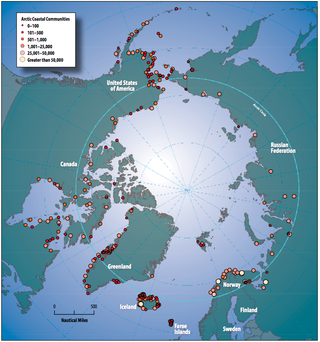
Circumpolar peoples and Arctic peoples are umbrella terms for the various indigenous peoples of the Arctic region.

Inuit are a group of culturally and historically similar Indigenous peoples traditionally inhabiting the Arctic and subarctic regions of North America, including Greenland, Labrador, Quebec, Nunavut, the Northwest Territories, Yukon (traditionally), Alaska, and Chukotsky District of Chukotka Autonomous Okrug, Russia. Inuit languages are part of the Eskimo–Aleut languages, also known as Inuit-Yupik-Unangan, and also as Eskaleut. Inuit Sign Language is a critically endangered language isolate used in Nunavut.
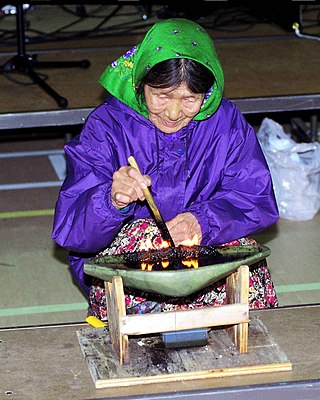
The Inuit are an indigenous people of the Arctic and subarctic regions of North America. The ancestors of the present-day Inuit are culturally related to Iñupiat, and Yupik, and the Aleut who live in the Aleutian Islands of Siberia and Alaska. The term culture of the Inuit, therefore, refers primarily to these areas; however, parallels to other Eskimo groups can also be drawn.
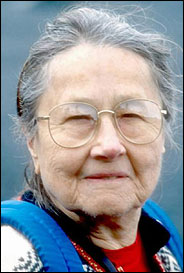
Frederica ("Freddy") Annis Lopez de Leo de Laguna was an American ethnologist, anthropologist, and archaeologist influential for her work on Paleoindian and Alaska Native art and archaeology in the American northwest and Alaska.

Old Bering Sea is an archaeological culture associated with a distinctive, elaborate circle and dot aesthetic style and is centered on the Bering Strait region; no site is more than 1 km from the ocean. Old Bering Sea is considered, following Henry B. Collins, the initial phase of the Northern Maritime tradition. Despite its name, several OBS sites lie on the Chukchi Sea. The temporal range of the culture is from 400 BC to possibly as late as 1300 AD. Another suggested range is from about 200 BC to 500 AD.
Patricia D. Sutherland is a Canadian archaeologist, specialising in the Arctic. She is an adjunct professor at Carleton University, an Honorary Research Fellow at the University of Aberdeen, and sole proprietor of Northlands Research. Much of her recent research has focused on evidence of a lengthy Norse presence on Baffin Island in the 11th to 13th centuries CE and trade between them and the now-extinct Dorset people of the region. Sutherland's theory that there were Europeans on Baffin Island hundreds of years before the Norse settled Greenland at the start of the 11th century is controversial.
Nelson H. H. Graburn, is a Professor Emeritus in Sociocultural Anthropology at University of California, Berkeley.
Chester S. Chard (1915–2002) was an American anthropologist who collaborated with Russian and Japanese scholars to establish the field of circumpolar or arctic anthropology. He received degrees at Harvard University (1937) and the University of California at Berkeley where he was one of Robert Lowie's last graduate students. He taught for over 20 years, mostly at the University of Wisconsin–Madison, and published over 160 books and articles. His research focused on Old World prehistory, cultural history of North and East Asia, and the interhemispherical relationships of New World cultures and circumpolar problems. He founded the academic journal Arctic Anthropology, in 1962. He published on numerous topics and cultures, including the ball courts of the Southwest, Pre-Columbian trade, the Kamchadal culture, North American burial grounds, the prehistory of Siberia, Inner Asia, prehistoric Japan, the Nganasan people, Eskimos, and the Chukchi Peninsula.

Florence Nupok Malewotkuk, also spelled Napaaq Maligutkak, was a Siberian Yupik artist known for her drawings of native Eskimo culture, scenes of local wildlife, and documentation of native tattoos. Her "somewhat naive" style earned her the title of "Grandma Moses of the Bering Sea." She was also a skilled artisan of beaded items such as sealskin Mukluks, toys, and slippers. Nupok's artwork has been exhibited across the United States and is in the permanent collection of institutions including the University of Alaska, the National Museum of the American Indian, the Anchorage Museum of History and Art, and the Smithsonian Institution.












